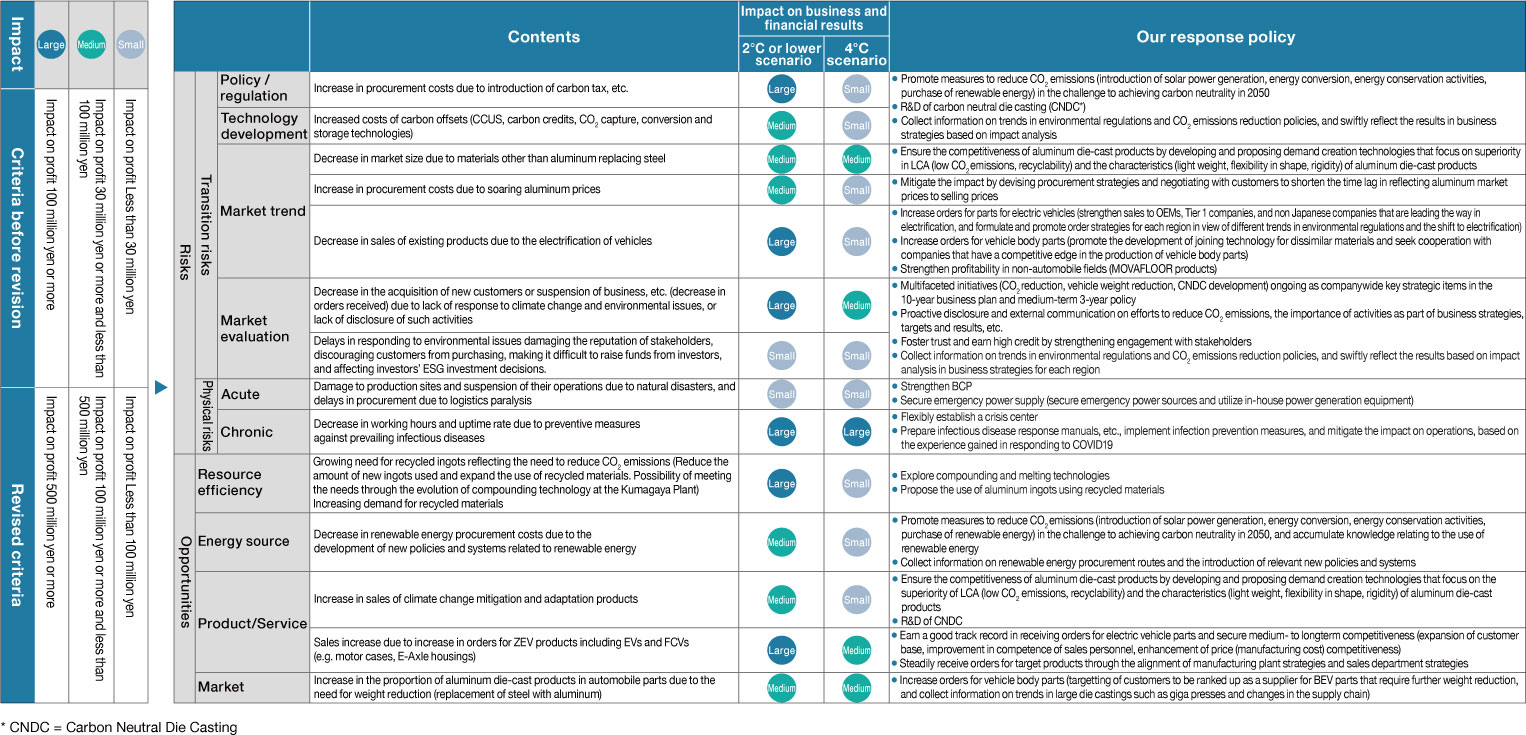We, Ahresty Group endorse the TCFD (*) recommendations and work to enhance information disclosure from the perspectives of “Governance,” “Strategy,” “Risk Management,” and “Metrics and Targets.”
*TCFD:Task Force on Climate-related Financial Disclosures
Governance
b) Describe management’s role in assessing and managing climate-related risks and opportunities.
The Ahresty Group identifies climate-related risks and opportunities, analyzes their impacts, and compiles countermeasures at the Sustainability Meeting. Important matters discussed at the Sustainability Meeting are proposed and reported at the Executive Committee Meeting, which deliberates important matters related to business execution and reports the results at the Board of Directors Meeting.
The Board of Directors Meeting receives regular reports on the content of the Executive Committee Meetings and supervises sustainability initiatives, including the status of responses to TCFD recommendations.
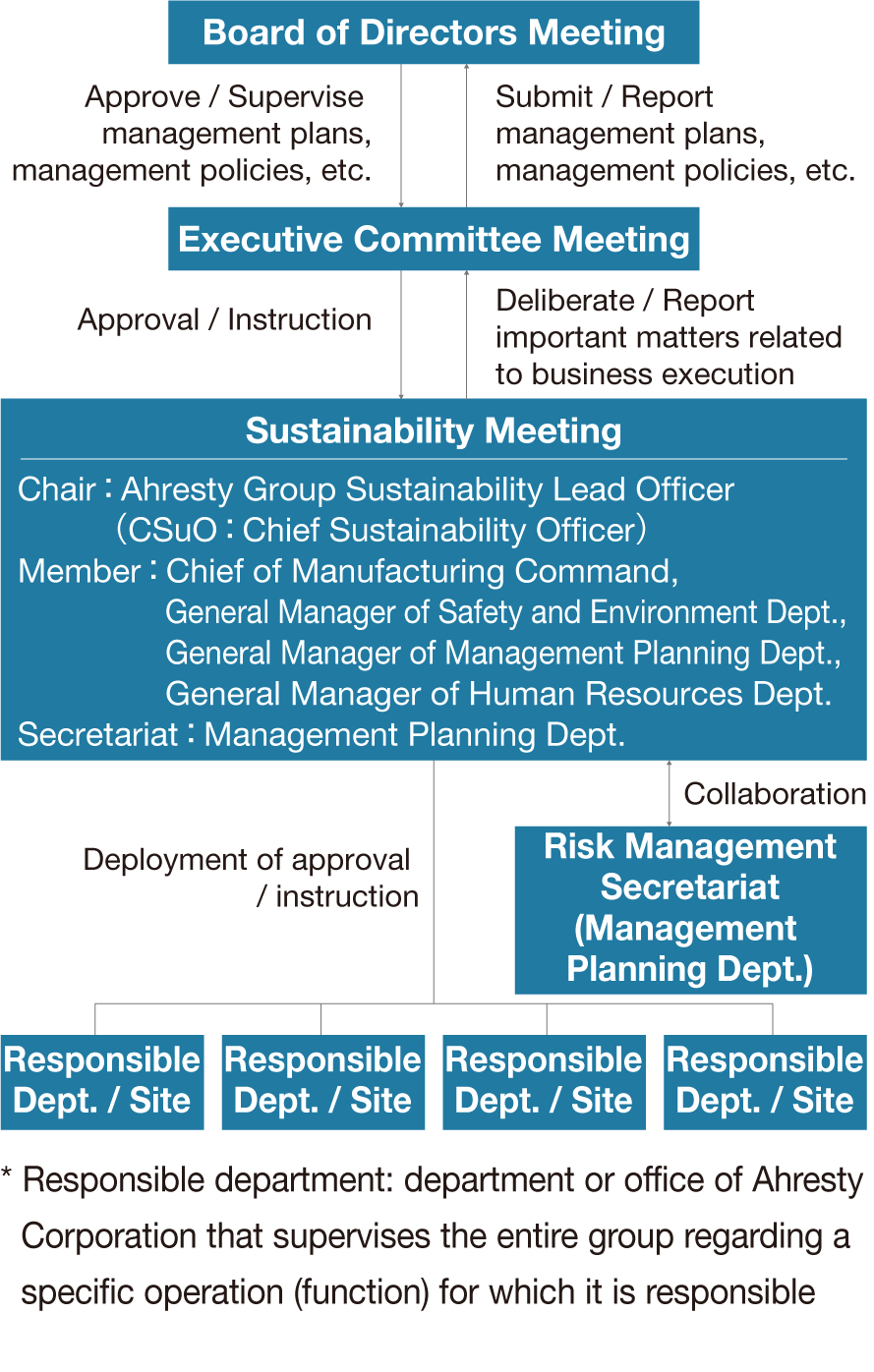
Board of Directors Meeting
・Regularly receive reports from the management on sustainability initiatives, including the status of response to TCFD recommendations, and supervise them
・Oversee the management’s response to risks, including the climate change risk, which have a significant impact on the company’s management
Executive Committee Meeting
plan, 3-year management policy (including setting management indicators and target values) and risk management plan
・Deliberate, make decisions, or receive reports on important matters related to the Group’s sustainability, such as sustainability-related risks and opportunities; activity guidelines and plans; and information dissemination and disclosure, including that in line with TCFD recommendations
Sustainability Meeting
・Identify sustainability-related risks and opportunities, analyze their impacts, compile countermeasures, and report the results at the Executive Committee Meeting
・Communicate and disseminate the decisions to the responsible department, as well as the relevant divisions, departments, and working groups to reflect them in the business plan and other measures
Risk Management Secretariat
・Formulate a risk management plan, manage its implementation status, and report at the Executive Committee Meeting and the Board of Directors Meeting
Strategy
The Ahresty Group has created an environmental roadmap and a sustainability roadmap and are working to improve them because the risks related to environmental issues can affect its business activities over a long period of time. In fiscal 2025-2027, which is the implementation phase of the medium-term management plan, we examine physical risks such as extreme weather brought about by climate change, the introduction of government policies and regulations, and changes in market needs, looking ahead to fiscal 2030, which is the target year of the 10-year business plan. As a result, we reflect the identified risks and opportunities in the Group’s strategy.
c) Describe the resilience of the organization’s strategy, taking into consideration different climate-related scenarios, including a 2°C or lower scenario.
To identify risks and opportunities due to climate change and disclose the degree of impact on its financial plans and the countermeasures to be taken, the Ahresty Group is extracting risks and opportunities for fiscal 2030, using the 1.5 to 2°C and 4°C climate-related scenarios published by IEA or IPCC.
IPCC…RCP 2.6、RCP8.5
IEA…Net Zero Emissions by 2050 Scenario、Sustainable Development Scenario etc
The criteria for impact assessment were revised in FY2023 in light of the performance levels.
Risk Management
b) Describe the organization’s processes for managing climate-related risks.
c) Describe how processes for identifying, assessing, and managing climate-related risks are integrated into the organization’s overall risk management.
Ahresty identifies climate-related risks and analyzes their degree of impact at the Sustainability Meeting.
Risks that have been analyzed to have a large impact are integrated into the company-wide risks to be evaluated and managed by the Risk Management Secretariat.

| Risk management process | Function | Responsible party |
|---|---|---|
| (1)Risk identification /analysis | Identify risks that may affect Ahresty’s management. Analyze the possibility of such risks becoming manifest and the degree of impact of the manifested risks. | Sustainability Meeting |
| (2)Risk assessment | Assess risks based on the results of risk analysis. (Identify the risks that need to be addressed by risk management plans.) |
Risk Management Secretariat |
| (3)Formulation of risk management plans |
For the risks evaluated as subject to risk management plans, set goals and activity plans and receive approval at the Executive Committee Meeting. | Risk Management Secretariat |
| (4)Promotion of risk avoidance/reduction activities |
Promote activities to avoid/reduce identified risks based on risk management plans. | Department responsible for the risk / Relevant sites |
| (5)Monitoring/management/reporting of risk management activities |
Monitor the progress status of risk management plans. Report the activity results once a year at the Executive Committee Meeting and the Board of Directors Meeting. |
Risk Management Secretariat |
Metrics and Targets
b) Disclose Scope 1, Scope 2 and, if appropriate, Scope 3 greenhouse gas (GHG) emissions and the related risks.
c) Describe the targets used by the organization to manage climate-related risks and opportunities and performance against targets.
The Ahresty Group has set reduction targets for CO2 emissions, which account for more than 90% of its GHG emissions.
Using Scope 1 and 2 CO2 emissions as metrics, we are working to reduce CO2 emissions.
The calculation of Scope 3 CO2 emissions for FY2024 has been completed.
As for Category 11 (use of sold products), which is associated with the largest emissions, we are working on targets such as increasing the sales ratio of parts for electric vehicles in the 10-year Business Plan.
Scope 3 CO2 emissions decreased compared to the previous fiscal year, and for Category 11, the increase in emissions was mitigated due to the higher proportion of weight from parts for electric vehicles. CO2 emission intensity per sales weight improved by about 1.1% compared to the previous fiscal year.
The increased installation of our products in electric vehicles will contribute to reducing CO2 emissions from automobiles. We will continue to help enhance the energy efficiency of automobiles and reduce CO2 emissions by expanding the supply of aluminum die-cast products, which are lighter than steel.
● CO2 reduction per weight against gasoline vehicle (ICE) HEV: Approx. 54%, PHEV: Approx. 60%, BEV: Approx. 70%
● A 10% increase in the weight ratio of parts for electric vehicles will result in a reduction of approximately 31,500 t-CO2 (equivalent to 2.5% of the entire Scope 3 emissions).
* CO2 emissions (Scope 1, 2, 3): Calculated based on the guidelines listed in the reference source and the ratio of sales weight by power source in FY2022.
*Intensity improvement rate: (Sales weight) × (CO2 emission factor per kg (lifetime)) calculated by power source, then summed; comparison limited to four-wheel vehicles only
CO2 emissions (Scope 1, 2, 3)
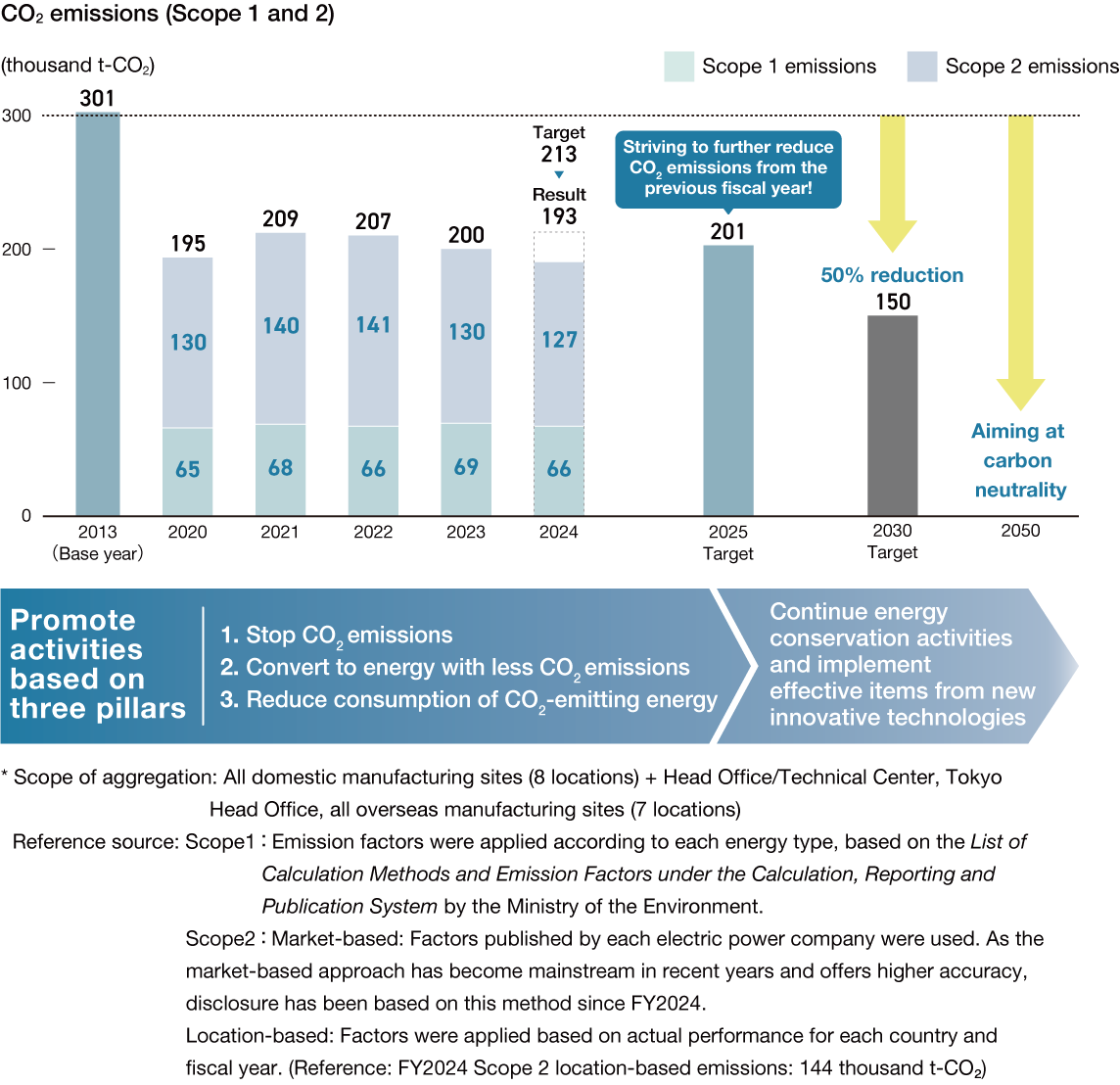
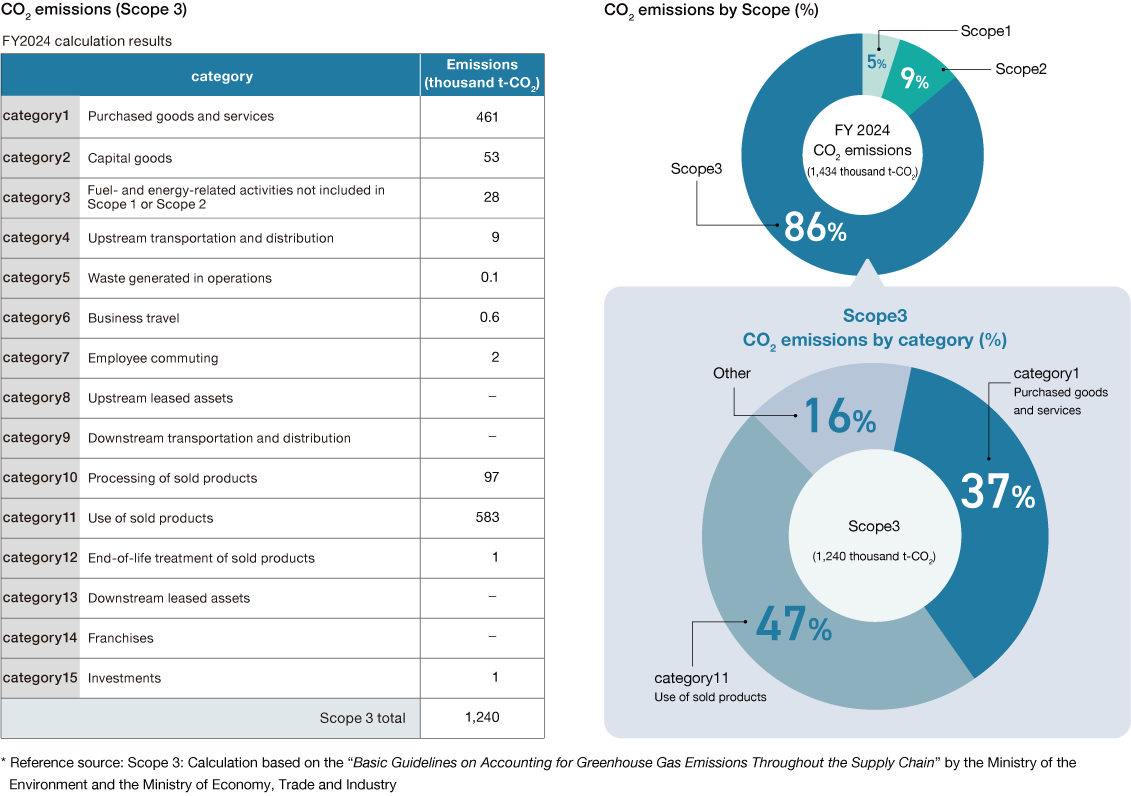
Initiatives for Carbon Neutrality
Aiming to reduce CO2 emissions by 50% by 2030 (compared to FY2013) and further achieve carbon neutrality by 2050, Ahresty is promoting emission reduction activities and measures based on the three pillars of “stop,” “convert,” and “reduce” CO2 emissions.
Carbon Neutrality Roadmap(Measures and target values)


Introduction of solar power generation
Solar power systems installed at all feasible Japanese sites
【FY2024 installation sites】 Head Office/Technical Center, Ahresty Techno Service and Ahresty Kumamoto
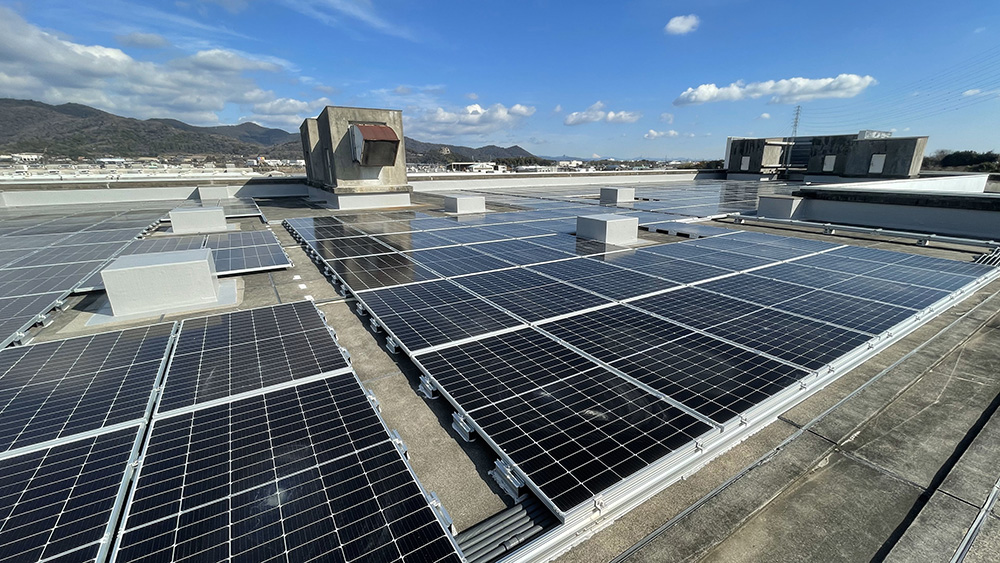
Conversion to energy with less CO2 emissions, energy conservation activities
Ahresty is promoting the conversion of energy used for melting from heavy oil to city gas (LNG) (approx. 29% reduction per calorific value). In addition, each business site sets its own energy conservation targets and implements various measures.
Energy conservation activities examples
- Application of a small amount of mold-release agent: Reduction of electricity consumption by shortening the time for application, air blow, etc.
- Efficient operation of compressors : Reduce electricity consumption by reviewing operating hours and improving air leaks
- Reduction of remelting weight : Reduced Scope 1 CO2 emissions in the melting process by correcting non-conformities, reducing the furnace cleaning frequency, and improving production plans.
- Improving efficiency of casting machine operation : Consolidated production from underutilized casting machines to other casting machines
Development of CO2 emissions reduction technology
Ahresty is promoting technological development that contributes to the future of the global environment, including laser heat treatment technology that reduces the amount of CO2 emitted when rigid plates and die castings are mechanically joined to one-tenth.
Laser heat treatment technology
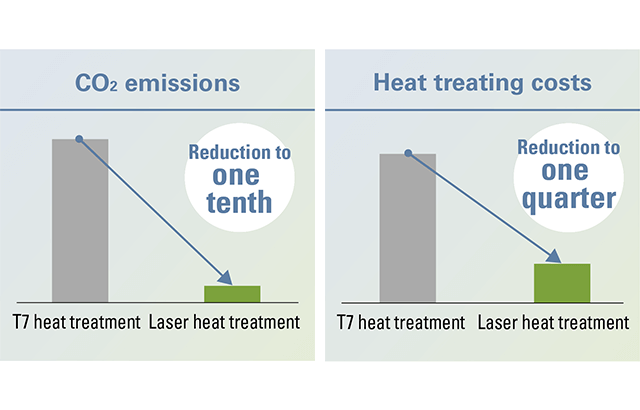
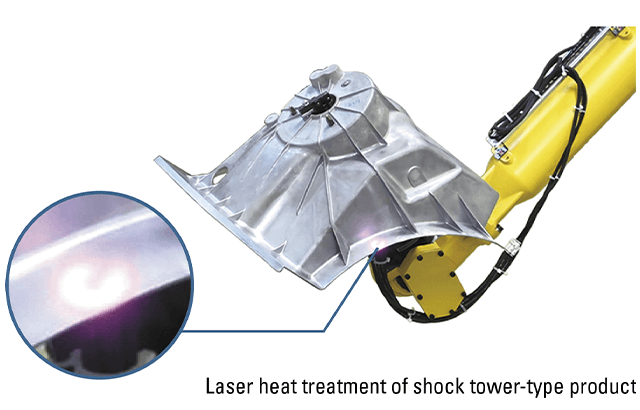
Award record of “Development of a laser heat treatment technology for SPR joints of aluminum die casting that reduces CO2 emissions to one-tenth”
- Received the Onoda Prize from the Japan Die Casting Association (May 2023)
- Received the 34th JSDMT Best Paper Award from the Japan Society for Die and Mould Technology (June 2024)








